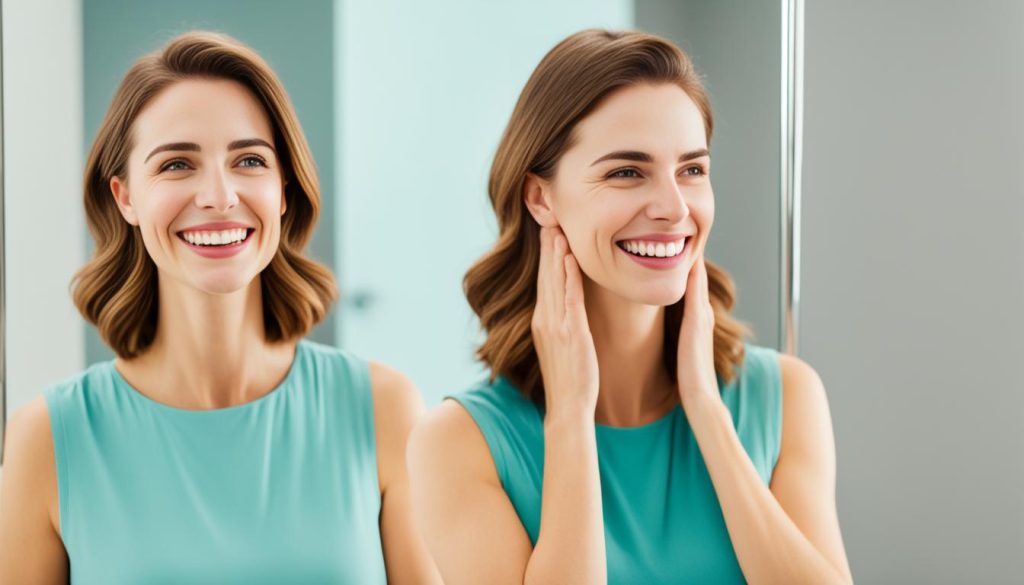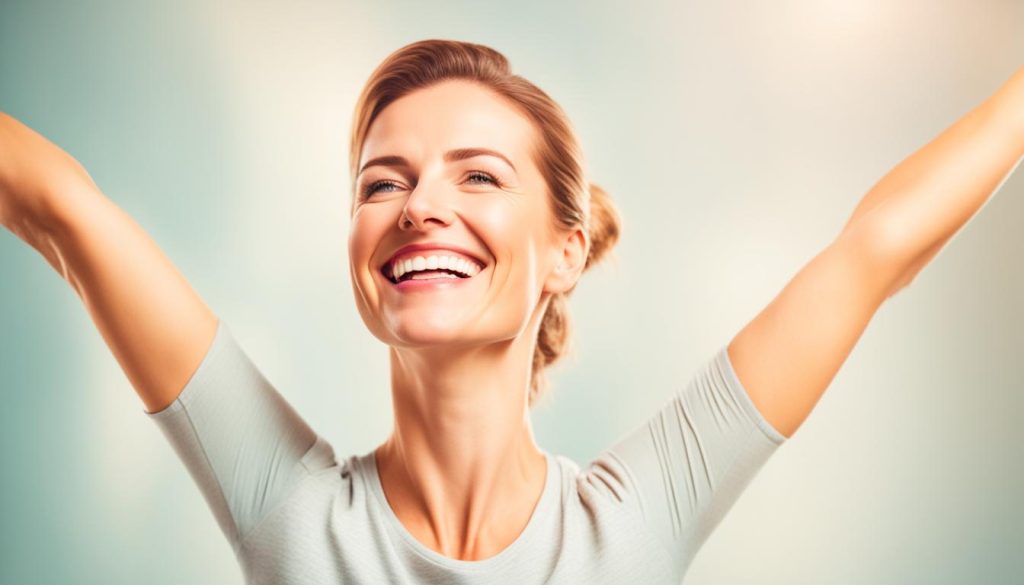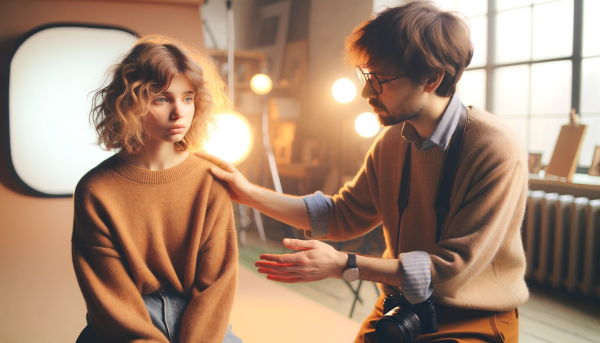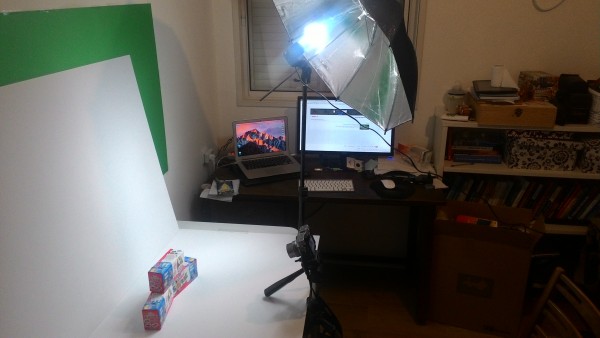Unlock the secret to a radiant, photogenic smile with our essential guide on how to smile for a picture. Navigating the nuances of posing for photos can seem daunting, but with our expert advice, you’ll tap into the tricks that lead to captivating, camera-ready grins. From mastering a natural beam to understanding the subtleties of expression, our tailored tips for a photogenic smile will equip you with the skills to shine in every snapshot.
Whether it’s for a casual social media post or a formal portrait, the power of a well-executed smile can transform your photographic presence. With our guidance, you’ll no longer be searching for ways to perfect your pose—we provide actionable steps and nuanced insights to elevate your photo-ready smile instantly.
Key Takeaways
- Discover the subtle art of a genuine smile that naturally enhances photos.
- Learn effective techniques for posing to showcase your smile at its best.
- Master the balance between a relaxed expression and a confident appearance.
- Gain insights into personalizing your smile, making each photo uniquely yours.
- Equip yourself with practical tips for a photogenic smile that stands out.
Understanding the Science of Smiling
The act of smiling is not just a spontaneous response to joy or humor; it is underpinned by complex psychological and physiological processes. A deeper dive into the science of smiling reveals the power this universal gesture has to shape our social interactions and personal well-being.
The Psychology Behind a Genuine Smile
At the heart of a heartfelt smile is the psychology of smiles. Psychological research suggests that genuine smiles, known as Duchenne smiles, are a manifestation of true happiness and are characterized by the activation of the orbicularis oculi muscle, which produces crow’s feet around the eyes. These authentic smiles can create positive feedback loops, enhancing social connections and even affecting our mood and the moods of those around us. The awareness of these impacts is essential in understanding why a genuine smile is so powerful in photographs.
Facial Muscles and Memory: Training Your Best Smile
Just like any other muscle in the body, the muscles responsible for smiling can be conditioned and strengthened with practice. Engaging in training facial muscles for smiling not only fortifies muscle memory but also can transform a lackluster grin into a radiant beam. By regularly exercising these muscles, you can develop the ability to summon a sincere and photogenic smile without effort. Below is a simple table outlining exercises designed to tone your smile.
| Exercise | Description | Benefit |
|---|---|---|
| Smile Push-Ups | Smile widely, hold for 10 seconds, release, and repeat. | Increases muscle endurance and allows for a broader smile. |
| Eye Crinkles | Squint with just the lower eyelid to create crow’s feet without over-smiling. | Strengthens the orbicularis oculi muscle for more genuine smiles. |
| Mouth Stretch | Hold a pencil between your teeth without your lips touching it and smile. | Improves control over mouth movements for a more graceful smile. |
Adopting a better understanding of the science of smiling, the intricate psychology of smiles, and engaging in training facial muscles for smiling will not just enhance your smile in photographs, but also enrich your daily life with more authenticity and joy.
Finding Your Signature Smile
Embarking on the journey of finding your perfect smile is not just about aesthetics, it’s about personalizing your smile in photos to capture the essence of who you are. A smile should not be a one-size-fits-all; rather, it’s about creating a unique smile that resonates with your individuality. Here, we’ll discuss how to embrace the quirks and features that make your smile truly yours.

To start creating a unique smile, begin with self-awareness. Stand in front of a mirror and practice smiling. Take note of how each smile feels and choose the one that feels most comfortable and genuine. Consider the following ways to enhance your exploration:
- Analyze your most spontaneous photos where your smile was natural and unposed.
- In front of the mirror, remember a genuinely happy moment and let the smile come naturally.
- Pay attention to your eyes; a genuine smile will also engage the muscles around your eyes, creating what is known as ‘crow’s feet’.
After identifying the smile that feels right for you, it’s time to practice and make it a natural part of your expression, especially when a camera is present. Personalizing your smile in photos also involves being aware of the setting:
- Consider the mood of the event or setting, and let your smile match that tone.
- If it’s a professional setting, a subdued, confident smile might be more appropriate than a broad grin.
- In casual or festive settings, a wider, more exuberant smile could fit perfectly.
Now, let’s compare two approaches to engaging your smile, with and without personalization:
| Standard Smile | Personalized Smile |
|---|---|
| Uniform expression, regardless of the photo’s context | Mood-matching expression tailored to the photograph’s setting |
| Limited engagement of facial muscles | Full engagement of muscles, including those around the eyes |
| Practiced and potentially inauthentic | Natural and reflective of genuine emotions |
Your unique smile is not just about the physical expression; it’s a reflection of your inner joy. In learning more about personalizing your smile in photos, you’re taking control over how you present yourself to the world. This tailored signature is about embracing and finding your perfect smile, one that aligns with your personality and radiates authenticity. So go ahead, capture your essence in every smile, and let each photograph tell the story of who you are.
Tips to Relax Your Face Before the Camera Clicks
Standing in front of a camera can trigger nerves for even the most confident individuals. Yet, a tense expression can detract from the genuine joy a photograph is meant to capture. To help you convey natural facial expressions, let’s delve into techniques aimed at relaxing your face for photos and reducing camera anxiety. Mastering these methods will empower you to look serene and comfortable, ensuring your captured moments are as authentic as they are memorable.
Breathing Techniques for a Natural Look
Deep breathing is not only a cornerstone of meditation but also an effective strategy for achieving a relaxed demeanor. Focused breathing can diminish the stress of a photoshoot and encourage a naturally content expression. Here are three steps to utilize breathing techniques to calm your features:
- Before the session, take several deep breaths, inhaling through the nose and exhaling through the mouth, to initiate a state of tranquility.
- Practice holding a smile as you breathe out slowly; the gradual release helps maintain a soft and genuine smile.
- Right before the shutter clicks, implement a quick, deep breath to refresh and relax your features.
Consistent application of these breathing techniques will help ease tension, soften your expression, and produce photographs that reflect a natural, comfortable you.
Practices to Ease Anxiety and Look Comfortable
To further reduce on-camera jitters and promote a more composed presence, consider the following practices:
- Visualize a positive outcome; imagine seeing a photograph of yourself where you look happy and at ease.
- Engage in light hearted conversation or humor with the photographer or others around you to alleviate pressure.
- Remember past successful photo experiences and the positive feedback you received, reinforcing your confidence.
- Practice posing and smiling in front of a mirror to find the most flattering and relaxed expression—muscle memory will take over in the actual moment.
Embracing these activities can remarkably reduce anxiety, enabling you to present the most natural and relaxed version of yourself.
Overcoming photograph-related stress is fundamental to harnessing the power of your smile in all its glory. With these targeted approaches, say farewell to camera anxiety and hello to pictures that will be treasured for a lifetime.
The Role of Posture in Enhancing Your Smile

The harmony between posture and smiling is undeniable when it comes to punctuating a great smile. An aligned, confident stance can significantly affect how others perceive your smile. In this article, we’ll explore the fine details of body language for a great smile and how you can use principles of good posture to naturally enrich your smile’s appeal.
A poised posture speaks volumes before a word is even uttered, complementing the genuine happiness a smile portrays.
To begin, let’s delve into some practical ways to merge posture and smiling so that you can shine in front of any camera or audience.
- Stand tall: Elevation of the spine elongates your presence, making your smile appear more distinguished.
- Shoulders back: Retracting shoulders not only improves posture but also opens up the chest, invigorating your smile with a burst of confidence.
- Balance your weight: Distribute your body weight evenly on both feet for a poise that signifies steadiness and composure.
When considering body language for a great smile, it’s also important to look at the science behind it.
| Posture Component | Effect on Smile |
|---|---|
| Head Alignment | Aligning the head over the spine impacts the symmetry of your smile and enhances facial features. |
| Eye Contact | Direct eye contact can enhance the sincerity of your smile, indicating engagement and interest. |
| Hand Position | Proper placement of hands can indicate openness and contributes to a harmonious image. |
Now that we’ve elucidated the essential aspects of enhancing a smile with good posture, let’s put this new knowledge into action and begin smiling with impeccable confidence.
Accessorizing Your Smile: Makeup and Fashion Tips
An enchanting smile is a universally admired feature, and certain stylistic choices can significantly enhance its radiance. Approaching your makeup and fashion with an eye for coordination not only amplifies your overall look but also puts an emphasis on your beaming smile. Our focus will be on utilizing smile-enhancing makeup and fashion tips to ensure that your grin truly stands out, complementing your natural beauty and showcasing your confidence.
Choosing Lip Color to Complement Your Teeth
One of the most direct ways to accentuate your smile is through the strategic use of lip color. The right shade can make your teeth appear brighter and your smile more inviting. Opt for hues that counteract any discoloration; usually, lipsticks with a blue-based undertone can make teeth seem whiter. It’s about creating harmony between your skin tone, your smile, and your makeup. Avoid overly glossy shades that can highlight imperfections and stick with matte or semi-matte finishes to ensure a picture-perfect result. Remember, when it comes to synchronizing lip color with your smile, the goal is to bolster your natural charm, not overshadow it.
The Impact of Clothing Choices on Your Smile’s Appearance
Similar to coordinating lip color and clothing, the attire you select plays an integral role in framing your smile. Opt for colors that flatter your skin tone and draw attention upwards towards your face. Necklines are also key; a v-neck, for example, can elongate the neck and, in turn, provide a pleasing frame for your facial features and smile. And it’s not just about color—texture and pattern can influence perception as well. Garments with a simple pattern or a slight sheen can catch the light beautifully, casting a subtle glow that benefits the appearance of your smile. Whether it’s a formal portrait or a candid shot, remember that what you wear is an extension of your personality and should collaborate with your smile to convey the best version of you.





